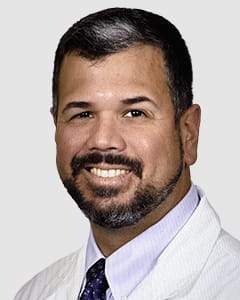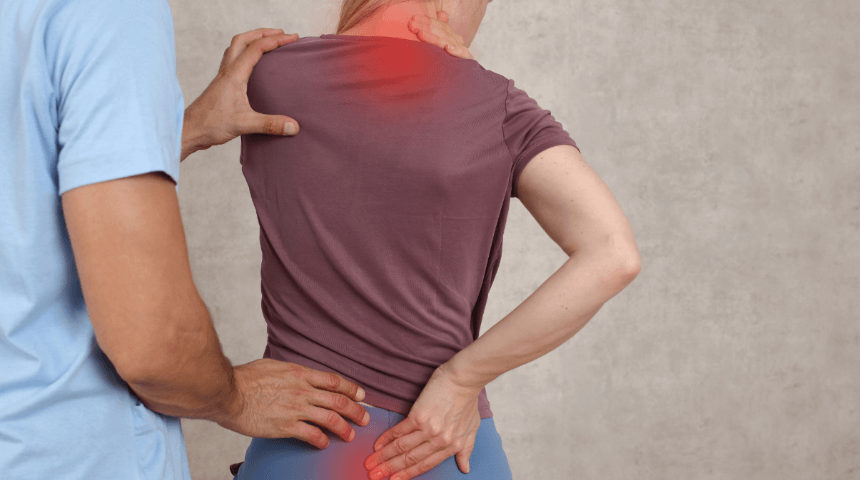Bodies change quickly during adolescence, and that’s when doctors usually notice scoliosis — a curved spine — in patients. Catch it early, and most cases can be managed simply and effectively. Let it go, and scoliosis might lead to back surgery or lifelong challenges.
It’s crucial that parents and physicians notice, and address, scoliosis symptoms rapidly. To dodge unnecessary problems, bypass the misinformation often found online and instead follow the common-sense tips provided after each error.
Error No. 1: Shrug Off Bad Posture
Yes, your daughter carries her backpack on only one shoulder, so she leans right. Sure, your son slouches to the left on the sofa while watching TV. Both are probably no problem. But pay attention. An odd stance, uneven shoulders or hips, or a difference between the left and right flank areas in the love- handles region could be scoliosis. Studies show that four out of 10 teens have adolescent idiopathic scoliosis, the most common type.
Ask your pediatrician about it during the next visit. Pediatricians see curved spines more than anyone, and your child’s doctor will know if it’s time to consult with a specialist. Your doctor also may notice a curved spine during a teen’s annual check-up. School nurses, too, might pick up on a curvature during schoolwide screenings. Don’t count on either. Be proactive.
Error No. 2: Assume You Have Time
Act immediately. Timing makes all the difference. Scoliosis starts to be obvious at about ages 10 through 18. The bones are still soft then, so the spine is still malleable — and easier to move back into place, or at least stop from curving more. The medical community has many ways to keep scoliosis from getting worse … until the bones mature. After that, surgery might be the only option.
Pain is an issue, too. Scoliosis may cause no discomfort, especially early on. That can change. It’s vital to start treatment before physical sensations set in.
Error No. 3: Think Scoliosis Can Only Be in One Part of the Back
The spine has three major parts, and scoliosis can take place in any of them:
- cervical, in the neck area
- thoracic, along the ribs
- lumbar, indicating the lower back region
Error No. 4: Try a Single Treatment Option
Physical therapy alone, or an alternative, might be enough to keep scoliosis from progressing. Two or more, though, may work better together. Here are options to discuss with your doctor:
- Physical therapy exercises, which might align the spine or at least strengthen the abdomen, therefore keeping the spine straighter.
- The Schroth method, a specific physical therapy program involving exercise and a mirror. This option is only for teenagers, not younger children who need to understand what they’re seeing.
- Swapping out over-the-shoulder book bags with two-strap backpacks, or handheld or wheeled satchels, so as not to drag down the body in one direction
- Yoga, since it strengthens the core, which helps keep the spine straighter. Look for age-appropriate videos online.
- Sports won’t cure scoliosis, yet many strengthen the core muscles, so that’s a plus. Cycling and swimming are especially good, yet any athletic activity builds strength.
- Losing weight. Obesity can worsen scoliosis, although more for adults than teenagers. If weight is a problem, take efforts to lead your child to healthier food choices.
- Bracing — wearing a body brace for several hours a day
Error No. 5: Balk at Braces
You might hesitate before agreeing to have your adolescent wear a body brace. Hundreds of options are available, and they’re better than ever, but your child might lobby against this option. Braces can be bulky or uncomfortable, and they certainly won’t project the cool image most teens want.
Braces work, though. They can undo or slow down the curve’s progression. Yes, your child will have to wear one 12 to 18 hours a day for a period of time, and yes, you’ll likely deal with compliance issues — getting your kid to put and keep the brace on daily. Do it. Each brace is custom-made depending on the curve and its location. Most deformities in children are malleable, so the brace can move, push and straighten the spine as necessary.
Respect the hesitation. Let your child know you’re seeking the least offensive brace that’s effective. Explain why it’s vitally important to wear it regularly, with details, and share insights about how the brace will help the spine long-term. Be clear that, without compliance, the scoliosis may ultimately require surgery.
Then make the experience as pleasant as possible: Offer the supplies for painting a brace, playing games it with, even dressing it like a Marvel character. Whatever works.
Error No. 6: Skipping the Specialist
Once your adolescent is diagnosed with scoliosis, you should likely visit a specialist. In the vast majority of cases, the next stop will be an orthopedic surgeon. Most of those are trained in pediatric scoliosis and will be able to guide you knowledgeably.
At times, another type of specialist may be needed. Once the bones mature at age 16 or later, a neurosurgeon might be called in to consult.
Error No. 7: Figure You’re Done
Since scoliosis doesn’t go away, you’ll need to monitor your teen’s spine. And that teen, as an adult, should take on that responsibility over the years.
Generally the scoliosis stops increasing once the bones stop growing, and the situation will remain static until age 35 to 40. Still, you never outgrow scoliosis. As the body ages, parts wear out, like car parts do. It’s critical to have surveillance. A curved spine is officially scoliosis when it curves 10 degrees or more. If the curvature changes by 5 degrees a year or more after that, it needs to be addressed.
Even if you have no symptoms and minimal pain, get an X-ray every three years, at the least, to see how much your spine is changing. A curve that progresses might require intervention so it doesn’t get worse.
Choose to Stay in Touch
Sign up to receive the latest health news and trends, wellness & prevention tips, and much more from Orlando Health.
Sign Up





